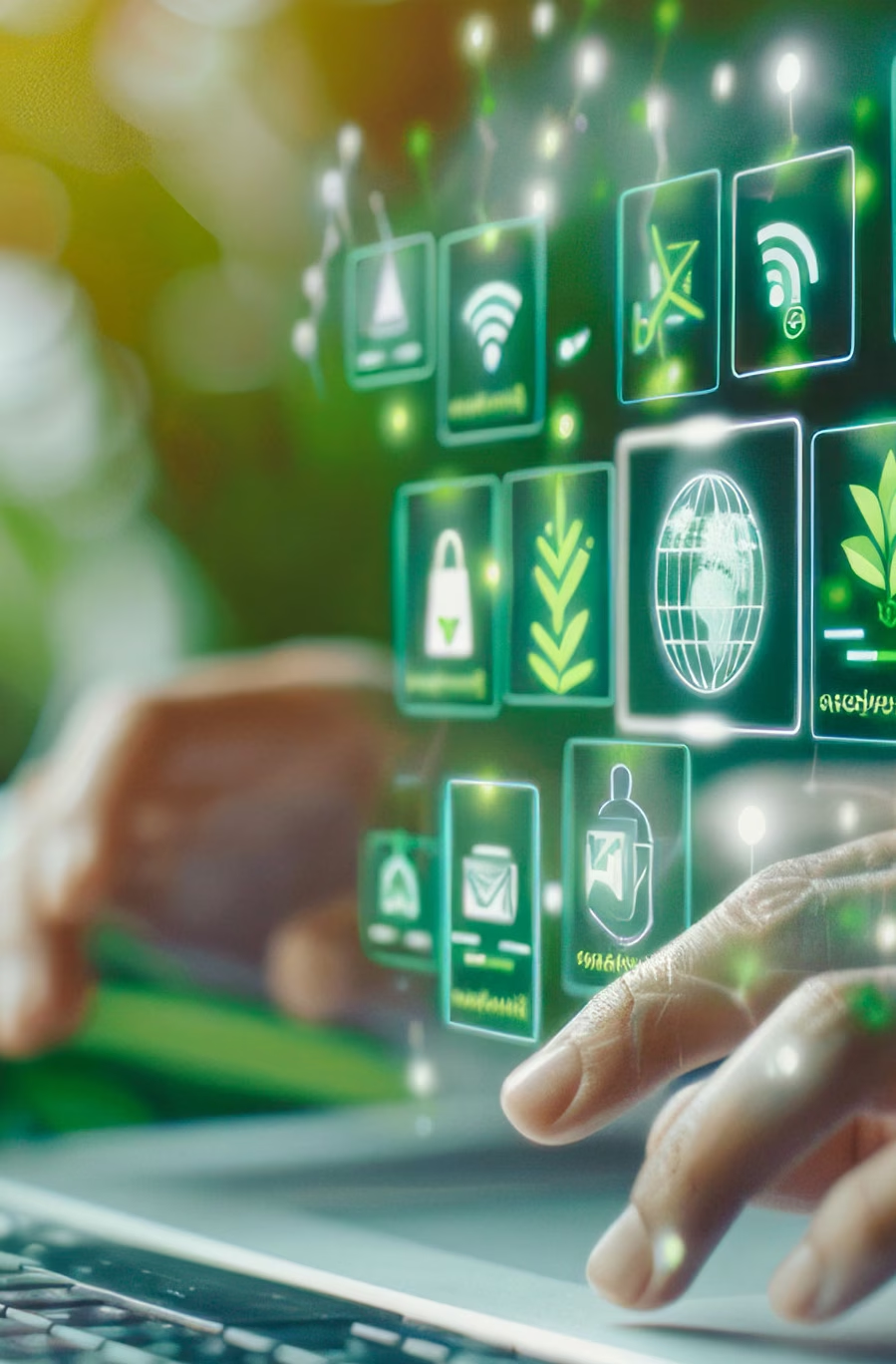



We design long-lasting, environmentally friendly products - responsibly and with your sustainability goals in mind.

Parkside - Sustainability is also playing an increasingly important role for our discounter customers. This shows that sustainable design and cost savings are not mutually exclusive, but complementary.
Sustainability right from the start.
An efficiently designed product not only saves production costs, but also ensures smooth assembly and long-lasting quality. Our process optimizes every design for manufacturing and assembly right from the start so that it integrates seamlessly into existing production processes.




A sustainable product is more than just a marketing promise — it is created through intelligent design, conscious choice of materials and a long-term perspective. We are guided by five central principles that make sustainability tangible in product development.
Sustainable products are not created through small optimizations — they require a holistic design strategy. We are guided by seven central principles to integrate sustainability into product development:
The best sustainability is when a product doesn't even have to be disposed of in the first place. With robust construction, high-quality materials and timeless design, we significantly extend the product life cycle.
Every gram of material saved saves resources and lowers production costs. Intelligent design solutions help to design products that save resources without sacrificing stability or functionality.
Recyclable plastics, bio-based alternatives and environmentally friendly metals are crucial — but only if they are also practicable. We check which materials meet the ecological and economic requirements.
Products should not end up as disposable items. Modular design, recyclable materials and simple dismantling concepts ensure that products can be recycled.
Welded housings, special screws and bonded components make repairs difficult — and drive consumers to dispose of products prematurely. We design our designs so that repairs can be made easily, quickly and cost-effectively.
Plastic packaging is one of the biggest environmental problems. We develop concepts for reducing materials, using recycled boxes or innovative alternatives such as grass paper or compostable packaging.
Sustainability only works if the customer is involved. Products must be attractive, user-friendly and economically viable. Transparent communication about the benefits of sustainable alternatives helps to reduce reservations.
Sustainability is no longer a buzzword — it is an economic success factor. Companies that convert early on secure regulatory advantages, avoid long-term cost traps and position themselves as innovation leaders. But anyone who waits too long risks being surprised by market changes.
The question is no longer whether sustainability is necessary — but how it is actually necessary in product design can be implemented. Companies that actively shape this change secure long-term competitive advantages, increase their efficiency and send a strong signal for future viability.
We help you develop sustainable products that combine ecological responsibility with economic success. Let's work together on solutions that make a difference — for your company, your customers, and the environment.
Make sustainability your company's strength: Now contact Record with us!
And we're happy to answer them.
Each project focuses on recyclable materials, energy-efficient manufacturing processes and durable designs. In cooperation with research institutions, we are working on innovative methods to reduce our ecological footprint.
We would like to actively help anchor sustainability as a central issue in product design.
Sustainability in product design is not a question of “if,” but of “how.” Every project offers potential for optimization — whether through the selection of environmentally friendly materials, more energy-efficient production processes or extending the lifespan.
The key lies in taking a holistic view of the product life cycle. From raw material extraction to production and use to disposal, improvements can be made at every stage.
Even with existing products, significant progress can be made through redesign or material substitution. The increasing availability of sustainable technologies and materials is constantly opening up new opportunities.
Ultimately, sustainability is not a final state of affairs, but a continuous process of improvement. Every small step towards environmental friendliness counts and contributes to a more sustainable future.
No Sustainability in product design is often associated with higher costs, but this assumption falls short. In fact, sustainable design is even more cost-effective in the long term.
Resource-saving materials and energy-efficient manufacturing processes reduce raw material consumption and energy costs. Durable products reduce replacement purchases and strengthen customer loyalty. Modular designs allow easy repairs instead of expensive new purchases.
The circular economy offers additional savings potential: Reusable components reduce material costs, while recyclability minimizes disposal costs. Companies also benefit from competitive advantages through a positive image and tap into environmentally conscious target groups.
Although sustainable design requires initial investment, the total operating costs are often significantly lower. With increasing demand and technological progress, the entry costs for sustainable solutions are also falling steadily.
Die Nachhaltigkeit eines Produkts lässt sich am besten messen, indem man seinen gesamten Lebensweg und das zugrunde liegende Design betrachtet. Mithilfe einer Lebenszyklusanalyse wird sichtbar, wie viel CO2, Energie und Material in Herstellung, Nutzung und Entsorgung steckt.
Dazu kommen Faktoren wie Materialwahl, Wiederverwendbarkeit, Reparierbarkeit und Recyclingfähigkeit. Ein durchdachtes Design hat einen großen Einfluss auf diese Werte, weil es den Materialverbrauch reduziert und die Lebensdauer verlängert.
Wenn Unternehmen diese Bereiche regelmäßig prüfen und dokumentieren, bekommen sie ein klares Bild davon, wie nachhaltig ihr Produkt wirklich ist und welche Designanpassungen den größten Unterschied machen.
Die Entwicklungszeit eines nachhaltigen Produkts hängt von Umfang, Komplexität und Zielsetzung ab, lässt sich jedoch mit einem klar strukturierten Prozess effizient planen.
In vielen Fällen dauert nachhaltige Produktentwicklung nicht länger als herkömmliches Design. Das liegt daran, dass wir von Beginn an auf die richtige Materialwahl, eine lange Lebensdauer und gute Recyclingfähigkeit achten. Zusätzliche Schritte wie Materialtests oder Prototypen können zwar etwas Zeit benötigen, führen aber zu besseren Ergebnissen und sparen später Aufwand und Kosten.
Durch unsere erprobten Methoden und die enge Abstimmung zwischen Design, Fertigung und Lieferanten bleiben Projekte transparent und planbar. Entscheidend ist, dass Nachhaltigkeit von Anfang an Teil des Designs ist und genau dabei unterstützen wir unsere Kunden.